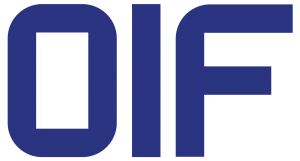OIF moves to raise coherent transmission baud rate
Gazettabyte – Roy Rubenstein
May 21, 2015
The Optical Internetworking Forum (OIF) has started modulator and receiver specification work to enhance coherent optical transmission performance. The OIF initiative aims to optimise modulator and receiver photonics operating at a higher baud rate than the current 32 Gigabaud (Gbaud).”We want the two projects to look at those trade-offs and look at how we could build the particular components that could support higher individual channel rates,” says Karl Gass of Qorvo and the OIF physical and link layer working group vice chair, optical.

Karl Gass
The OIF members, which include operators, internet content providers, equipment makers, and optical component and chip players, want components that work over a wide bandwidth, says Gass. This will allow the modulator and receiver to be optimised for the new higher baud rate.
“Perhaps I tune it [the modulator] for 40 Gbaud and it works very linearly there, but because of the trade-off I make, it doesn’t work very well anywhere else,” says Gass. “But I’m willing to make the trade-off to get to that speed.” Gass uses 40 Gbaud as an example only, stressing that much work is required before the OIF members choose the next baud rate.
“We want the two projects to look at those trade-offs and look at how we could build the particular components that could support higher individual channel rates”
The modulator and receiver optimisations will also be chosen independent of technology since lithium niobate, indium phosphide and silicon photonics are all used for coherent modulation.
The OIF has not detailed timescales but Gass says projects usually take 18 months to two years.
Meanwhile, the OIF has completed two projects, the specification outputs of which are referred to as implementation agreements (IAs).
One is for integrated dual polarisation micro-intradyne coherent receivers (micro-ICR) for the CFP2. At OFC 2015, several companies detailed first designs for coherent line side optics using the CFP2 module.
The micro-ICR IA also defines a low-speed SPI bus interface to control the trans-impedence amplifiers in the coherent receiver. The digital bus interface enables circuit settings to be changed with operating temperature. With the first generation coherent receiver design, analogue signalling was used for their control, says Gass. The smaller micro-ICR has a reduced pin count and so uses a narrower digital bus to control the circuits.The second completed IA is the 4×5-inch second-generation 100 Gig long-haul DWDM transmission module.
“This [module] is considered an intermediate step with the almost immediate goal being to go to a CFP module,” says Gass.

